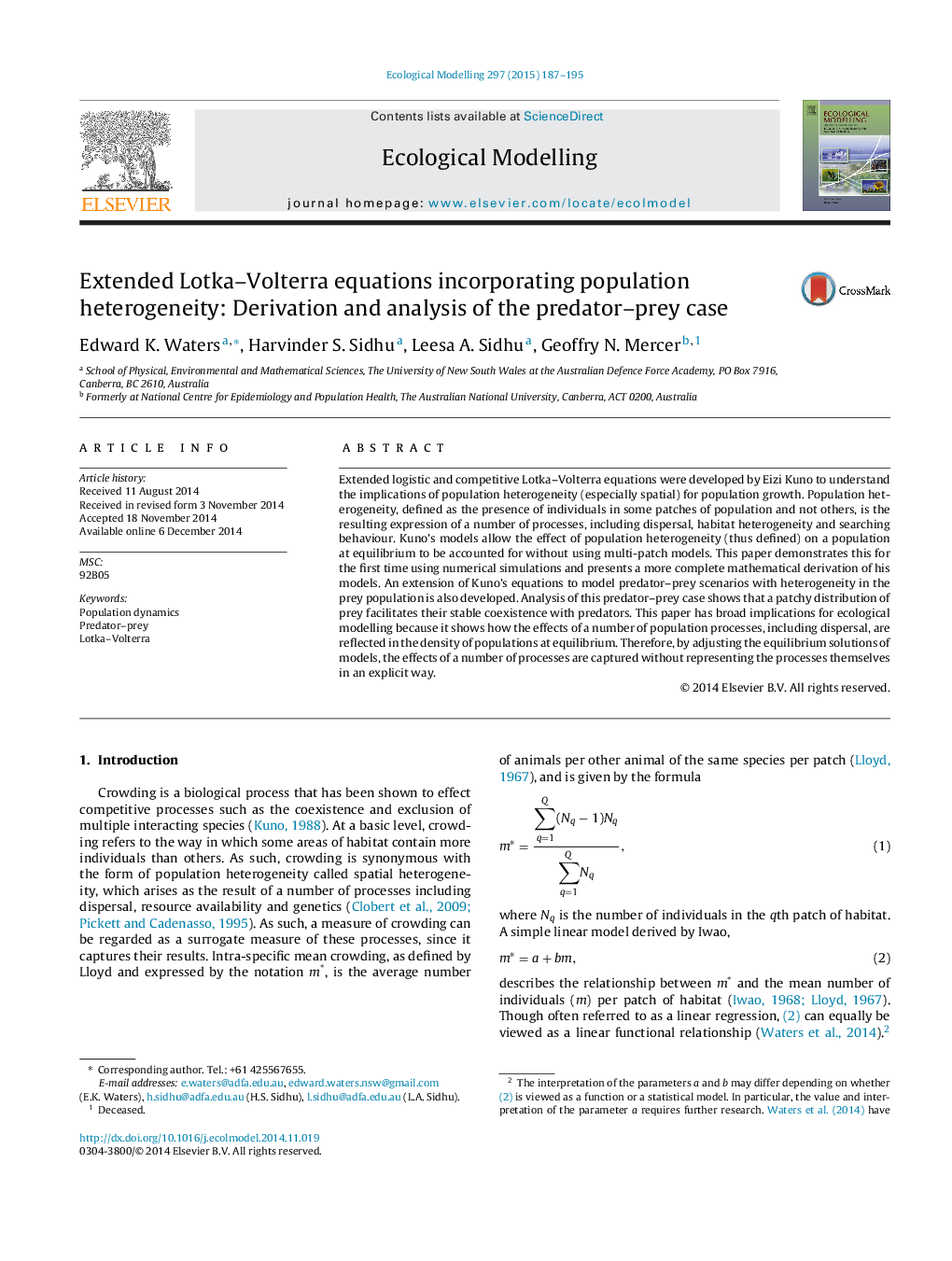| Article ID | Journal | Published Year | Pages | File Type |
|---|---|---|---|---|
| 4375828 | Ecological Modelling | 2015 | 9 Pages |
•Relationship of logistic equation to Lloyd's mean crowding is shown.•Logistic equation incorporating patchy habitat derived from first principles.•The equation is extended to two dimensions to model inter-specific competition.•Predator–prey equations incorporating patchy habitat of prey are derived.•Effect of patchy habitat of prey on predator reproduction is demonstrated.
Extended logistic and competitive Lotka–Volterra equations were developed by Eizi Kuno to understand the implications of population heterogeneity (especially spatial) for population growth. Population heterogeneity, defined as the presence of individuals in some patches of population and not others, is the resulting expression of a number of processes, including dispersal, habitat heterogeneity and searching behaviour. Kuno's models allow the effect of population heterogeneity (thus defined) on a population at equilibrium to be accounted for without using multi-patch models. This paper demonstrates this for the first time using numerical simulations and presents a more complete mathematical derivation of his models. An extension of Kuno's equations to model predator–prey scenarios with heterogeneity in the prey population is also developed. Analysis of this predator–prey case shows that a patchy distribution of prey facilitates their stable coexistence with predators. This paper has broad implications for ecological modelling because it shows how the effects of a number of population processes, including dispersal, are reflected in the density of populations at equilibrium. Therefore, by adjusting the equilibrium solutions of models, the effects of a number of processes are captured without representing the processes themselves in an explicit way.
